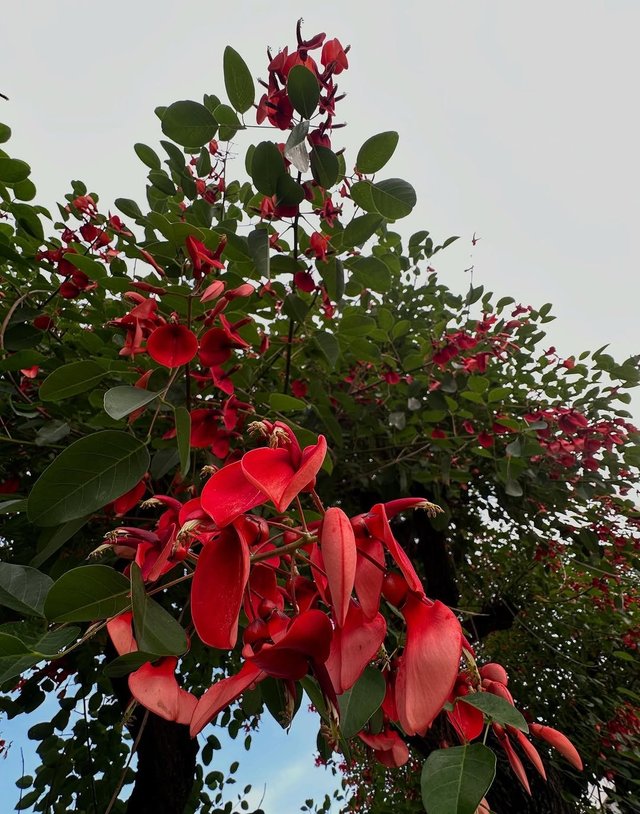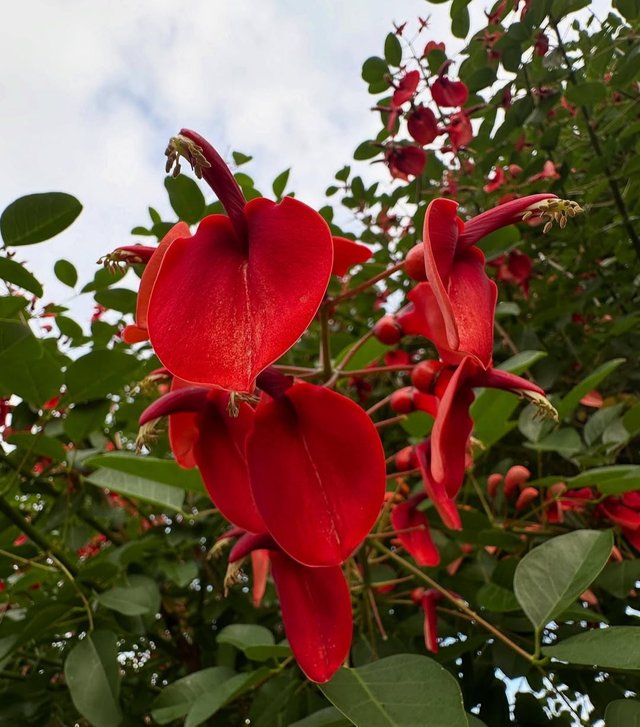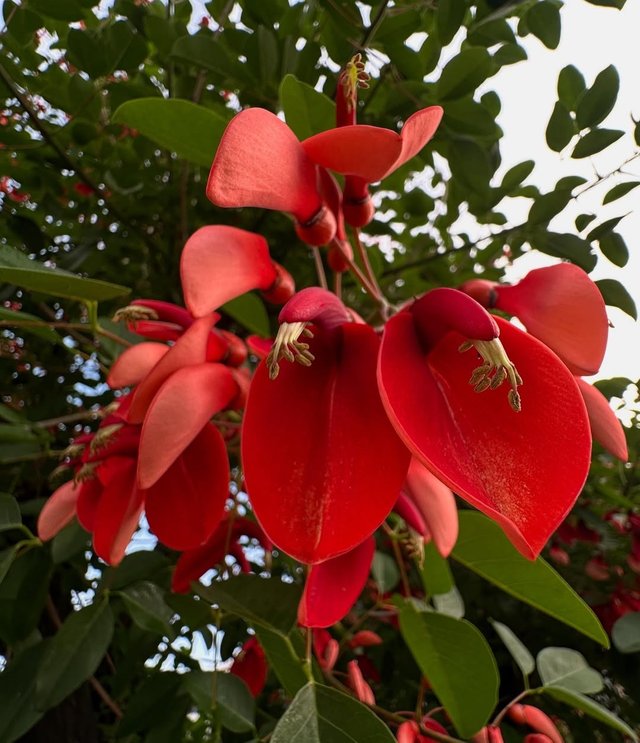Erythrina crista-galli Flower Wonderful
Erythrina crista-galli: The Spectacular Cockspur Coral Tree
Erythrina crista-galli, commonly known as the Cockspur Coral Tree, is a striking ornamental tree admired for its flamboyant red flowers and unique twisted branches. Native to South America—particularly Argentina, Uruguay, southern Brazil, and Paraguay—it is the national flower of Argentina and Uruguay. In these countries, it is not just a symbol of natural beauty but also of resilience and cultural pride.
Botanical Description
Scientific name: Erythrina crista-galli
Common names: Cockspur Coral Tree, Ceibo, Seibo
Family: Fabaceae
Origin: South America
The name “crista-galli” comes from Latin and means “cock’s comb,” a reference to the distinctive shape of the inflorescences, which resemble a rooster’s crest. This flowering tree can grow as either a small deciduous tree or a large shrub, reaching up to 5–10 meters in height, depending on the climate and growing conditions.
Morphology
Leaves: The leaves are pinnately compound, typically with three leaflets. They are bright green and have a soft texture. Like many legumes, the leaves may fold at night.
Flowers: The flowers are the most striking feature. They are deep crimson to scarlet, butterfly-shaped, and arranged in long racemes that can grow up to 40 cm long. These vivid blooms appear in abundance during spring and summer.
Fruit: Like other legumes, Erythrina crista-galli produces pods containing seeds. These are not typically the focus of the plant’s ornamental value.
Thorns: The branches often bear curved thorns, another reason for the "cockspur" name.
Trunk and branches: The trunk tends to be twisted and gnarled, adding to its visual charm in winter when the leaves are shed.
Cultural and Symbolic Significance
The Ceibo, as it is known in Argentina and Uruguay, holds deep national importance. Declared the national flower of both countries, it is celebrated in poetry, folklore, and music. It symbolizes strength, beauty, and the spirit of the South American people.
A famous legend tells the story of a brave indigenous woman named Anahí, who was captured and sentenced to death. As she was burned at the stake, the Ceibo tree is said to have sprung from her ashes, symbolizing rebirth and courage.




%20(9).jpeg)